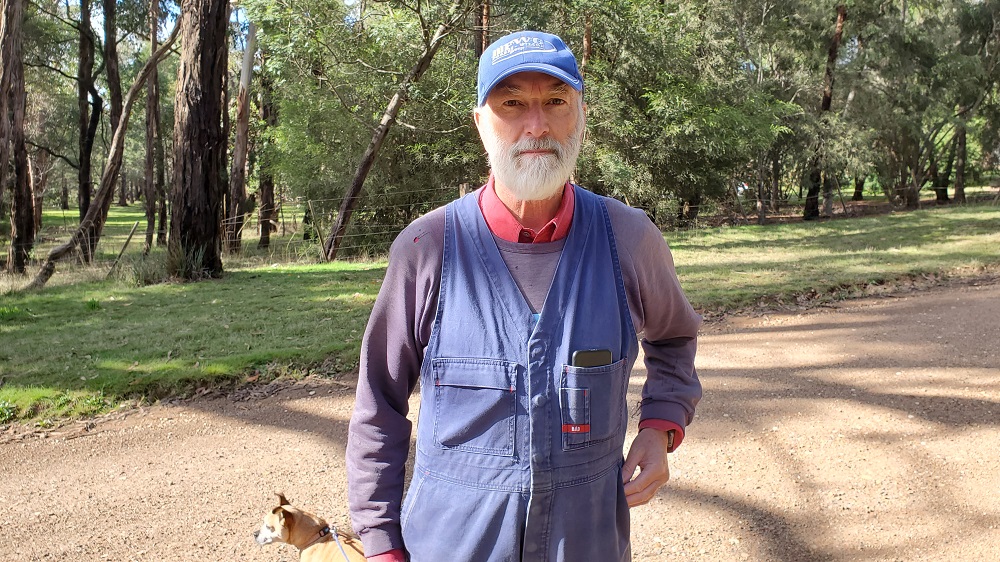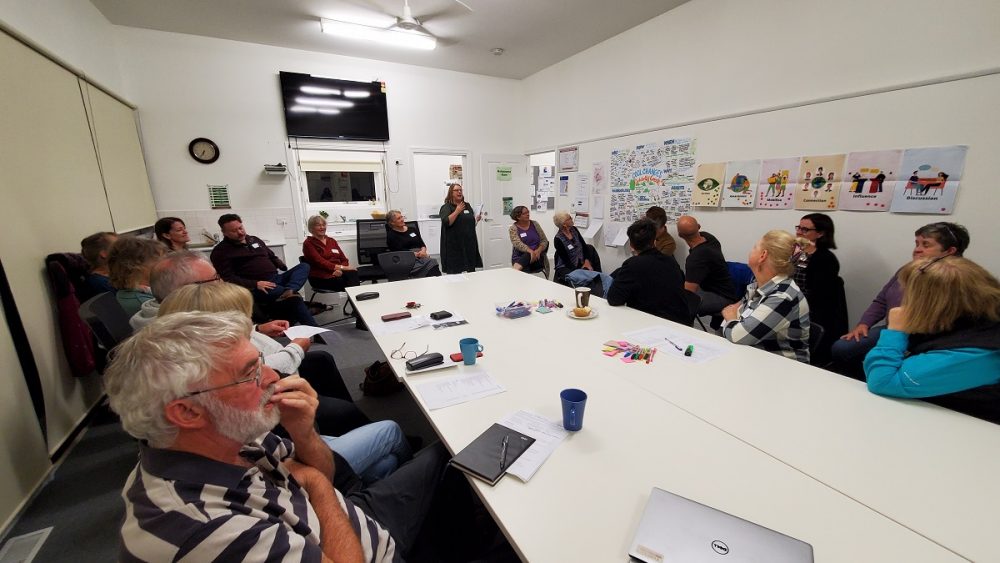
Etienne Wenger’s Communities of Practice (1998) was a revolution in my professional life. I had been working with groups and networks and communities of place – that there might be communities of practice, around the myriad aspect of human life, was a revelation.
The garden. The property. The shed. The house.
Living 3 kms up the Sandy Creek valley, on five acres, with 584 square metres of shed, has opened whole suites of practice, each wrapped around an aspect of living here, each a way of thinking and living.
But it’s the relationships sustained over time that are the community of practice, not the articulated practices. Going back to Wenger recently, I realised I hadn’t really heard that. I’d gotten caught up in the practices, the doable, describable stuff. The things a consultant can put into a report and get paid for.
Living here, in a valley, in a rural town, on the edge of Melbourne, a place and a community of place that I’ve had to get to know, it’s apparent day by day that it is the commitment to a shared enterprise that forms and maintain the relationships within which practices are held.
I notice that the relationships tend not to be spoken about in official accounts of what’s happening in a place. We have the plans, one for every agency, one for team in each agency, but the communities of practice that will live in the contours of those plans we think of in the crudest of terms.
And even when you drop in each community – the environment people, the people concerned about roads and footpaths of the town, the people who want to find a way to keep the friendly feeling of a town where people still stop to talk in the street – the stuff we do and plan for is a just a sign of the life of the relationships we form around our shared enterprise, but not the life itself.
When I took this photo of Greg, he lived half a kilometre away, where the bitumen turns to dirt, the other end of BarrmBirrm, the place our local landcare group looks after. Like me, he walked through Barrm Birrm every couple of days, so he noticed things. When we crossed paths, he would say what he’d noticed – rubbish mainly – and what he had cleared up.
Greg and I and a dozen other regulars are part of a community of practice, one called caring for the bush: picking up discarded human stuff is one of the practices. Now Greg has moved on. Nearly fifty years on the corner of Gap and Royal, and Greg and Noleen have sold up and moved to somewhere different. Built their house facing the sun in the mid 1970s; got a hearty laugh he said out of my diatribe (in our local newsletter) about our obsession with displaying our properties at right angles to the line of the street on which we happen to be living.
Now they’re gone, and Fred Barlow just a bit further down Gap Road is going too, Fred who bought a block on Barclay Court when it was still a grassed paddock rolling down to Sandy Creek, after old man Barclay pulled his fruit trees and carved it up into lots.
After thirteen years here, I feel the rhythm of settlement. New people arrive, and reinvent the place, bring their ideas of houses grandstanding for the cars going past, and lavender hedges along the driveway and big sheds at the back.
The place changes, and the practices of place shift, but not so much. You still have to mow the lawn, look after whatever garden you’ve signed on for, keep heat in the house, put your bins out, put your neighbour’s bins out when they’re away.
And if I drive downtown, to Riddells Creek, there’s another community, the one pushing, nudging, deraming the town to where we want it to be. Two years on from this meeting for ‘a Climate Action Plan’, we have $5000 from the Shire for a design for turning a couple of drainage sumps into wild places, and an EcoEvent of a day, showcasing some of the many ways each household could live close to net zero.

I’m glad for the Shire’s support for our efforts, even if that always means a plan. Plans are overrated: with the future inherently unstable, and action dependent on our efforts as residents and agencies, the trust put in ‘the plan’ seems to me entirely misdirected. What matters is the sense of agency and the relationships of action the planning might foster.
Our planning workshops have given us a reason to gather in one place, and meet others who want to ‘do something.’ We have got ourselves a plan, but the most important thing is that we have pitched ourselves into conversations with people with similar crazy ideas. We don’t get lost in complaining.
I’ve set about running some of these conversations, and it’s just a buzz being with people who give a damn and get down the the work of making something good happen. That makes a community of a place, all those small communities of practice weaving their efforts into the place they love, the place they feel for, the place where they have chosen to live
When I worked for money, I was paid to help communities of practice develop, but it’s only living here in a small valley of the Macedon Ranges, a resident, that I’ve come to appreciate how ‘community’ is something felt and lived. The shared enterprise is primary; a wild diversity of resources contribute to the practices, but ….
‘… gain their coherence not in and of themselves as specific activities, symbols, or artifacts, but from the fact that they belong to the practice of a community pursuing an enterprise.’ (p 82)
I feel a bit of a dill not not realising this sooner. I would have wished for it earlier in my life, but you gotta be thankful whenever such things finally settle in!

